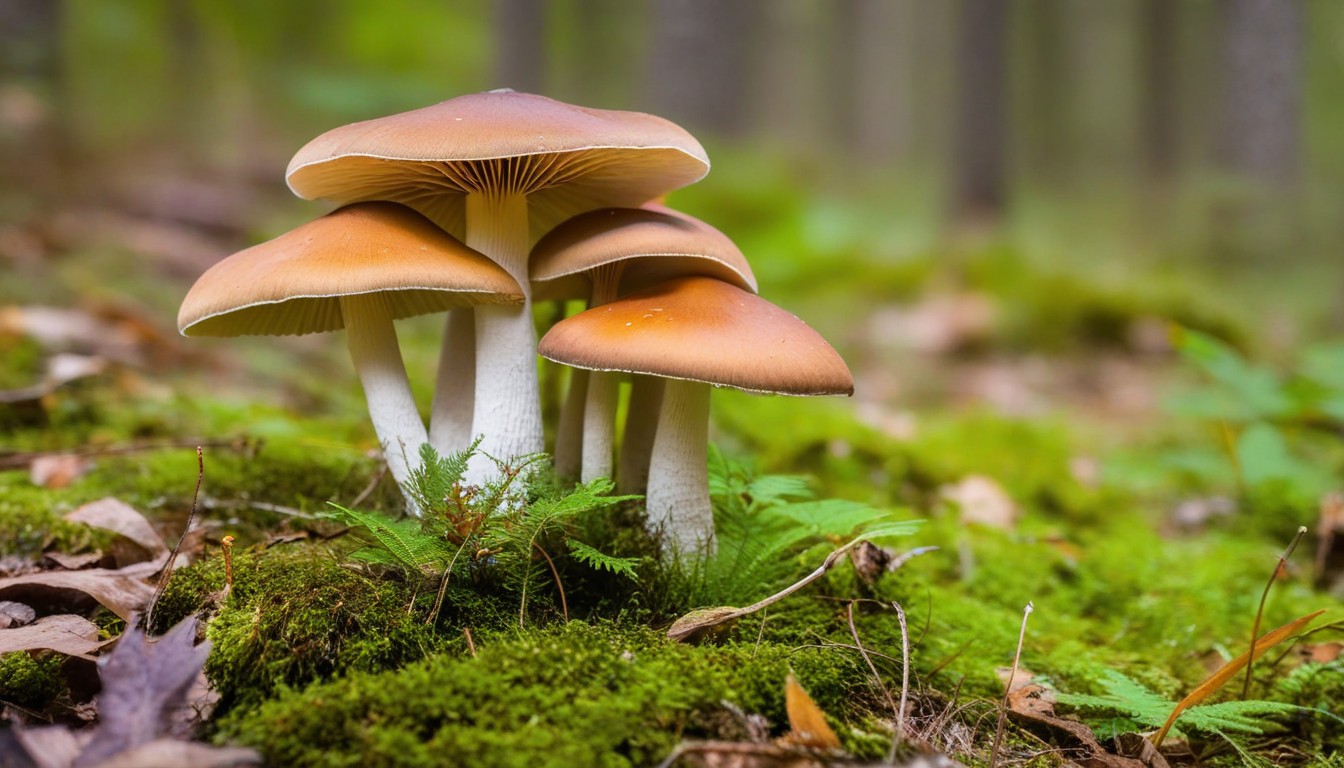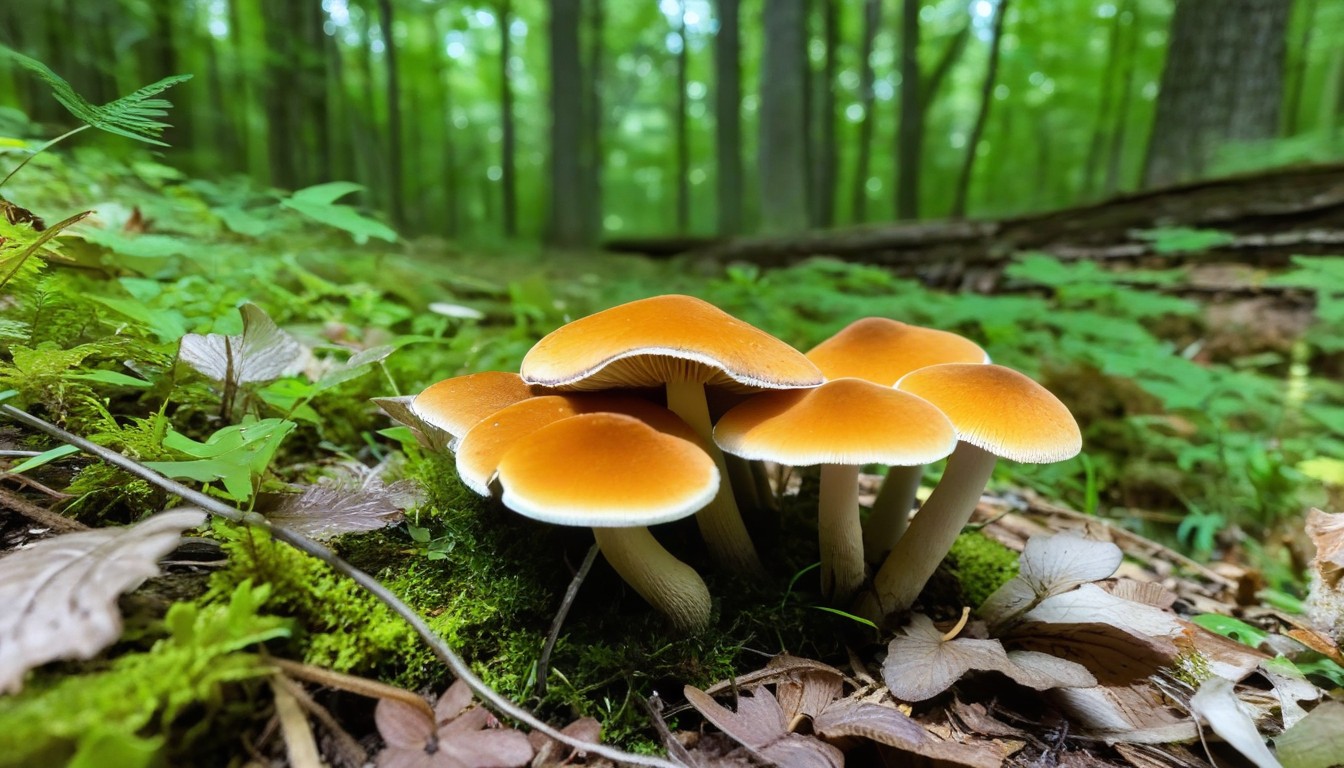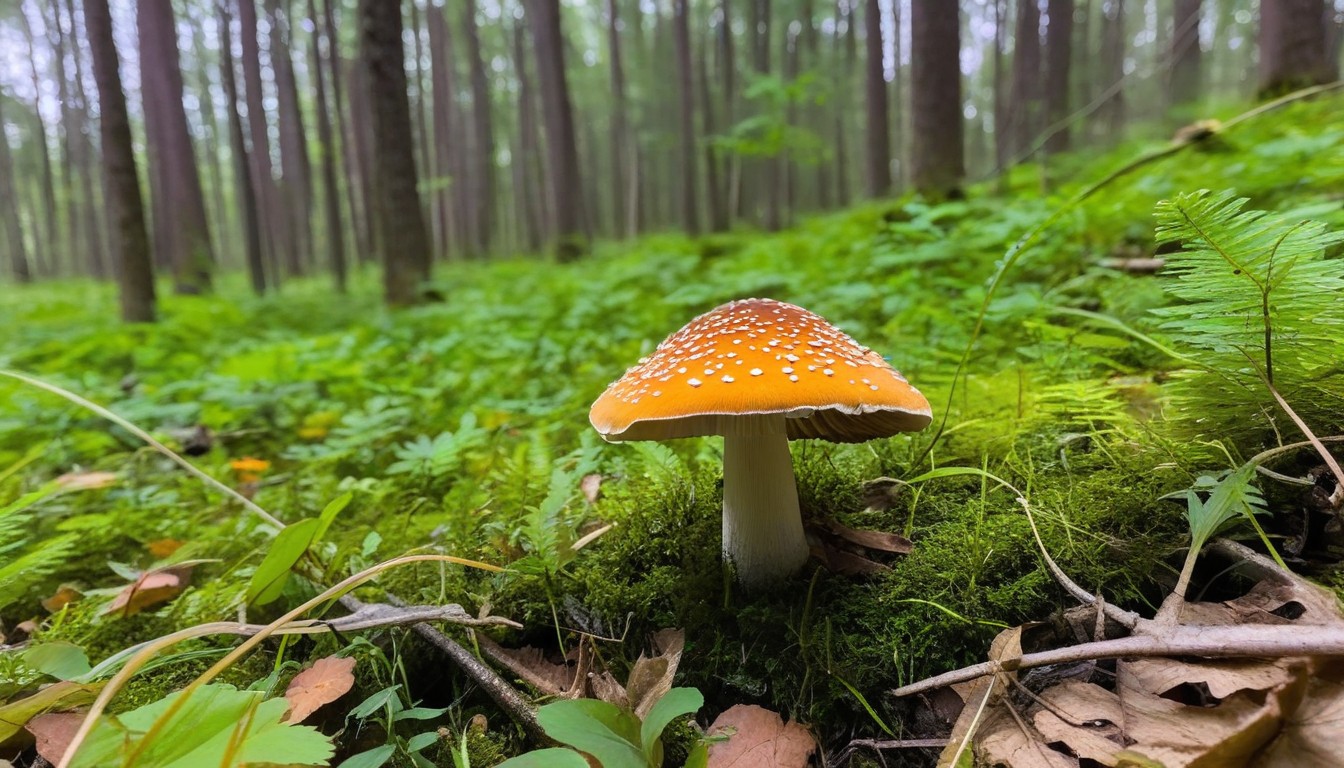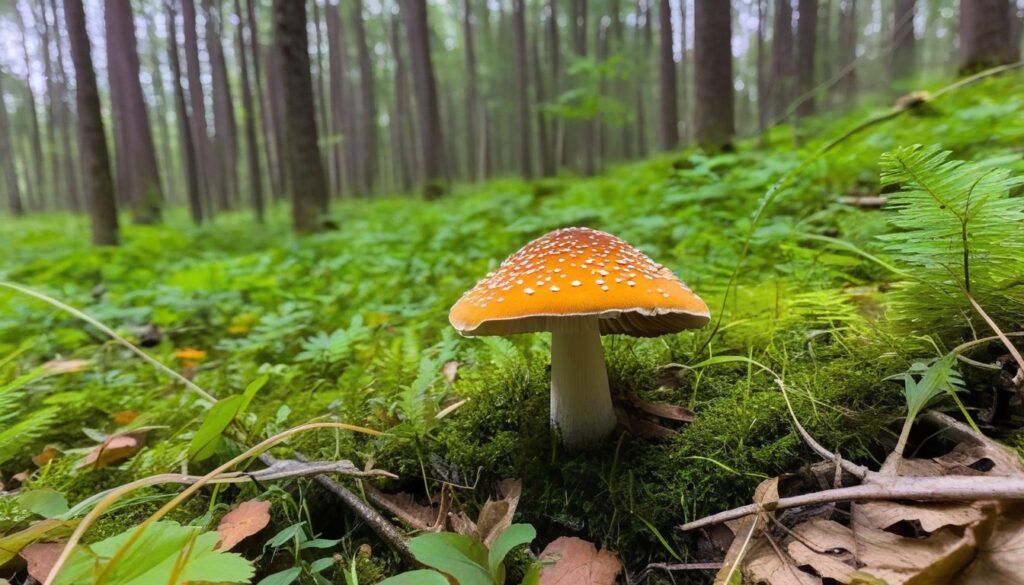The Bible is a source of religious and spiritual guidance for millions of people around the world. However, some have suggested that there may be more to the biblical narratives than meets the eye. Could the use of psychedelic substances such as magic mushrooms have played a role in shaping the stories and symbolism found in the Bible?
Join us on a thought-provoking exploration through biblical texts and historical evidence as we delve into the intriguing connections between magic mushrooms and the Bible. Discover the potential meanings behind symbolic references, examine the role of visionary experiences in prophetic revelations, and consider alternative perspectives on this fascinating topic.
Key Takeaways:
- The Bible may contain references to the use of psychedelic substances such as magic mushrooms
- The historical context of ancient psychedelic use is important for understanding the potential influence on biblical narratives
- The enigmatic substance known as “manna” may have been a psychedelic mushroom
- The mystical experiences described in the Bible may have been influenced by the psychedelic compound psilocybin
- The use of symbolism and allegory in biblical stories may have been enhanced by the inclusion of psychedelic imagery and experiences
The Historical Context of Ancient Psychedelic Use
Ancient cultures have a long history of using psychedelic substances for spiritual, medicinal, and recreational purposes. Evidence of ancient psychedelic use has been found in various parts of the world, from the Amazon rainforest to the deserts of North Africa.
Some of the most notable examples of ancient psychedelic use come from the pre-Columbian civilizations of Central and South America, where substances like ayahuasca and peyote were used in shamanic rituals. These practices were often shrouded in secrecy, passed down through generations of indigenous communities.
In addition to these practices, archaeological evidence suggests that ancient Greeks, Romans, and Egyptians also used psychoactive substances, such as opium and cannabis.
Ancient Psychedelic Use in the Middle East
The use of psychedelics in ancient Hebrew traditions is less well-documented, but there is evidence to suggest that these substances may have played a role in certain rituals and practices. For example, the use of frankincense and myrrh, both of which have psychoactive properties, is mentioned in the Bible.
Some scholars also believe that the ancient Israelites may have used a substance known as “soma,” which is described in the sacred texts of the Hindu religion as a powerful psychedelic. While there is no direct evidence to support this claim, it is an interesting theory that raises questions about the nature of ancient psychedelic use.
The Significance of Ancient Psychedelic Use
The use of psychoactive substances in ancient cultures is significant for a number of reasons. For one, it suggests that humans have been exploring altered states of consciousness for thousands of years, and that these experiences have been an important part of spiritual and cultural practices.
Furthermore, the study of ancient psychedelic use can provide insights into the ways in which different cultures have explored the nature of consciousness and the human experience. By understanding the historical context of psychedelic use, we can gain a deeper appreciation for the powerful effects these substances can have on the human mind and spirit.
Psychoactive Substances in Biblical Traditions
Intriguing references to psychoactive substances can be found throughout the Bible, and some scholars suggest that these may allude to the use of psychedelics in ancient Hebrew traditions. Many of these references remain open to interpretation, but they offer a fascinating glimpse into the possible influence of psychoactive plants on biblical texts.
Genesis 1:29
One of the earliest references to psychoactive plants in the Bible can be found in Genesis 1:29, in which God grants Adam and Eve permission to eat the fruits of all the trees in the Garden of Eden, including the tree of life and the tree of knowledge of good and evil. While these trees are not specifically identified as having psychoactive properties, some scholars noted that the tree of knowledge of good and evil bears strong similarities to entheogenic (“god-containing”) plants used in shamanic traditions.
Exodus 30:22-29
In Exodus, God instructs Moses to create a special anointing oil using a recipe that included myrrh, cinnamon, calamus, and cassia. While these ingredients are not known to produce psychedelic effects, some scholars suggest that calamus could be a mistranslation and actually refer to acacia leaves, which contain DMT and have been used in indigenous cultures for spiritual purposes.
Ezekiel 8:10-14
In this passage, the prophet Ezekiel envisions a group of elders engaging in idol worship, and he describes a substance called “the vine” that they are using in their rituals. While the identity of this substance is unclear, some scholars believe that it may have been a reference to ayahuasca, a powerful psychedelic brew made from the ayahuasca vine and other plants.
Psalm 104:14-15
This psalm contains a reference to God providing “plants for people to use, and wine to make them happy,” which some scholars interpret as a nod to the potential use of psychoactive plants for spiritual purposes.
“He causes the grass to grow for the cattle, and herb for the service of man, that he may bring forth food out of the earth; And wine that maketh glad the heart of man, and oil to make his face to shine, and bread which strengtheneth man’s heart.” – Psalm 104:14-15
While the use of psychedelics in biblical traditions remains a topic of debate and speculation, these and other references suggest that psychoactive substances may have played a role in the spiritual practices of ancient Hebrew cultures.
The Enigmatic “Manna” in Scriptures

The Bible mentions “manna” as a mysterious substance that God provided to the Israelites during their exodus from Egypt. While the exact nature of manna remains uncertain, some scholars have proposed that it could have been a psychedelic mushroom, specifically the Psilocybe cubensis.
There are several reasons why manna’s identification as a magic mushroom is plausible. Firstly, manna is described as a small round object that appears on the ground in the morning dew. This description bears some resemblance to the physical appearance of the Psilocybe cubensis mushroom, which also grows on the ground and has a small, round cap.
Moreover, manna is said to induce a range of effects, such as providing nourishment, inducing hallucinations, and producing a sense of euphoria. These effects could be attributed to the Psilocybe cubensis mushroom, which contains the psychoactive compound psilocybin.
|
Manna in the Bible |
Psilocybe cubensis Mushroom |
|---|---|
|
Small, round object |
Small, round cap |
|
Appears on the ground in the morning dew |
Grows on the ground |
|
Provides nourishment |
Contains essential nutrients |
|
Induces hallucinations and euphoria |
Contains psilocybin, a psychoactive compound |
Despite these potential similarities, the identification of manna as a magic mushroom is not universally accepted. Some scholars argue that manna was a naturally occurring substance, such as a resin or insect excretion. Others suggest that manna was a symbolic representation of God’s provision for the Israelites, rather than a literal substance.
“We ought not to be too dogmatic about the nature of manna. It is quite likely that it is a natural substance, which has some nutritional or medicinal value, and which was regarded as a gift of God.”
Regardless of its true identity, manna remains an enigmatic symbol in biblical history and continues to inspire speculation and debate among scholars and readers alike.
Psilocybin and Mystical Experiences in the Bible
Psilocybin is a psychoactive compound found in magic mushrooms, and it has been known to induce profound mystical experiences in users. Interestingly, there are several biblical texts that describe mystical experiences that share similarities with those induced by psilocybin.
The Burning Bush
In the book of Exodus, Moses encounters a burning bush that speaks to him and reveals the name of God. This experience is often interpreted as a mystical or supernatural event. The burning bush could be seen as a symbol of an altered state of consciousness induced by psilocybin, which could have led to Moses’ visionary experience.
Paul’s Vision on the Road to Damascus
The apostle Paul had a transformative mystical experience on the road to Damascus which led to his conversion to Christianity. He described seeing a blinding light and hearing the voice of Jesus. This experience could also be interpreted as a mystical experience induced by psilocybin.
The Book of Revelation
The Book of Revelation is filled with vivid and fantastical imagery that could be interpreted as psychedelic in nature. The descriptions of angels, demons, and otherworldly landscapes are reminiscent of the hallucinations induced by psilocybin.
While there is no concrete evidence that magic mushrooms were used in biblical times, the similarities between biblical texts and psilocybin-induced mystical experiences are intriguing. Further research could shed light on the potential influence of psychedelic substances on biblical traditions.
Symbolism and Allegory in Biblical Stories

Symbolism and allegory play significant roles in biblical stories, serving to convey deeper meanings and spiritual messages. The use of psychedelic imagery and experiences could enhance the symbolism and allegory, adding another layer of interpretation to these stories.
For example, the story of Adam and Eve in the Garden of Eden could be interpreted as an allegory for the human experience of using psychedelics. The forbidden fruit, which grants knowledge of good and evil, could be seen as a metaphor for the psychedelic experience, which can bring both positive and negative insights.
“You will not certainly die,” the serpent said to the woman. “For God knows that when you eat from it your eyes will be opened, and you will be like God, knowing good and evil.”
This quote from the Bible aligns with the idea that taking psychedelics can open one’s perception and provide an expanded sense of consciousness.
Another example of psychedelic symbolism in the Bible can be found in the book of Ezekiel. The prophet describes a vision of a “wheel within a wheel” that is often interpreted as a representation of the psychedelic experience.
|
Symbolism in Ezekiel’s Vision |
Possible Interpretation |
|---|---|
|
The “living creatures” with multiple faces and wings |
The distorted perception and altered sense of self that can accompany a psychedelic experience |
|
The “wheels within wheels” and “whirling wheels” |
The visual distortions and fractal patterns often observed during a psychedelic trip |
|
The “throne” and “brilliant light” |
The spiritual insights and altered sense of unity that can be experienced during a psychedelic trip |
While these interpretations are subjective and open to debate, they serve as examples of how psychedelic experiences could be incorporated into biblical narratives to convey deeper spiritual messages.
The Role of Visionary Experiences in Prophetic Revelations
Prophetic visions are an integral part of biblical traditions, with numerous examples throughout the Old and New Testaments. From Ezekiel’s vision of the heavenly chariot to John’s revelation of the apocalypse, these experiences often involve vivid imagery and supernatural encounters.
Some scholars have suggested that these visions may have been induced by the use of psychoactive substances, including magic mushrooms. While there is no direct evidence to support this theory, it is worth exploring the potential role of visionary experiences in prophetic revelations.
“The biblical prophets were known for their unusual experiences and their ability to receive messages from God. Whether these experiences were the result of divine inspiration or the use of psychedelics is open to interpretation.”
One of the most famous accounts of a prophetic vision in the Bible is found in the book of Isaiah. In chapter 6, Isaiah describes a powerful encounter with God, in which he sees the Lord seated on a throne, surrounded by heavenly beings. The vision is so overwhelming that Isaiah falls to his knees, declaring himself unworthy in the presence of God.
While there is no direct evidence to suggest that Isaiah’s vision was induced by psychedelics, some scholars have noted parallels between his experience and the effects of magic mushrooms. The psychedelic compound psilocybin, found in certain species of mushrooms, has been known to induce feelings of awe, reverence, and a sense of connection to the divine.
Furthermore, some researchers have suggested that visionary experiences may have played a role in the development of religious beliefs and practices throughout history. According to this theory, altered states of consciousness may have allowed individuals to tap into a spiritual realm that is normally inaccessible in everyday life.
Whether or not the prophets of the Bible used psychedelics to induce their visions, it is clear that these experiences played a central role in shaping religious traditions and beliefs. From the revelations of the apostle Paul to the visions of the prophet Daniel, the Bible is filled with accounts of individuals who claim to have encountered the divine in extraordinary ways.
The Importance of Interpretation
Of course, like many aspects of biblical scholarship, the question of prophetic visions and psychedelics is open to interpretation. While some scholars may see evidence of psychedelic use in certain texts, others may interpret the same passages differently.
Moreover, even if psychedelic use was prevalent in ancient cultures, it is difficult to determine with certainty which substances were used, and how they were prepared and consumed. Without direct evidence, it is impossible to say for sure whether psychedelics played a role in prophetic visions described in the Bible.
Regardless of one’s interpretation, however, the study of prophetic visions and altered states of consciousness offers a fascinating glimpse into the intersection of religion, culture, and human experience. Whether induced by psychedelics or not, these experiences have left an indelible mark on the biblical tradition and continue to inspire awe and wonder in people of all faiths today.
Alternative Interpretations and Skepticism

The connection between magic mushrooms and the Bible is a controversial and debated topic. While some scholars and enthusiasts believe in the potential presence and influence of psychedelics in biblical traditions, others remain skeptical and dismissive of these interpretations.
One alternative perspective argues that the references to “manna” in the Bible are not evidence of psychedelic mushroom use, but rather a natural substance like honey or a spiritual metaphor for divine providence. Similarly, the mystical experiences described in biblical texts could be attributed to meditation or other spiritual practices rather than the use of psychedelics.
Moreover, some critics question the reliability of the sources that suggest the use of psychedelics in ancient Hebrew cultures. The lack of concrete evidence and the potential bias of the researchers who propose these theories raise concerns about the validity of the claims.
Despite these alternative viewpoints, it is important to acknowledge and explore the potential connections between magic mushrooms and the Bible. While they may not be conclusive or universally accepted, these interpretations offer a new perspective on biblical stories and traditions, stimulating critical thinking and deepening our understanding of ancient culture and spirituality.
Whether or not one subscribes to the idea that magic mushrooms were present in biblical times, the exploration of this hypothesis is an important exercise in critical thinking and cultural analysis.
Conclusion
As we conclude our exploration of magic mushrooms in the Bible, we have come across some intriguing connections that have sparked contemplation and debate.
While some may dismiss the possibility of psychoactive substances playing a role in religious traditions, others find these connections to be compelling and significant.
Regardless of where one falls on this spectrum, it is important to approach this topic with an open mind and a willingness to engage with different perspectives.
The Significance of the Debate
Engaging in discussions about the potential use of magic mushrooms in the Bible can be valuable in many ways. Even if the topic is controversial, it can help us:
- Gain a deeper understanding of ancient cultures and traditions
- Explore the complex relationship between spirituality and psychedelics
- Challenge our preconceptions and biases
- Expand our knowledge of the human experience
Final Thoughts
At the end of the day, the significance of magic mushrooms in the Bible may never be fully resolved. But what is important is that we continue to explore and question, using our curiosity and critical thinking to gain new insights and perspectives.
Whether you believe in the potential influence of psychedelics on religious traditions or not, we hope that this article has sparked some thought-provoking ideas and encouraged you to dive deeper into the intersection of ancient cultures and the human experience.
FAQ
Are magic mushrooms mentioned directly in the Bible?
No, magic mushrooms are not specifically mentioned by name in the Bible. However, some scholars propose that certain references may allude to their use or effects.
What are some biblical references that are associated with magic mushrooms?
Some interpretations suggest that passages such as the burning bush, the tree of knowledge, and the manna from heaven could potentially be linked to magic mushrooms or psychedelic experiences.
What evidence supports the presence of magic mushrooms in ancient Hebrew traditions?
The evidence primarily comes from symbolic interpretations and similarities between biblical imagery and known psychedelic experiences. However, it is important to note that these interpretations are speculative and subject to various perspectives.
Is there scientific evidence to support the presence of psilocybin in biblical times?
No, there is no scientific evidence that directly confirms the presence of psilocybin or magic mushrooms in biblical times. The associations made are primarily based on symbolic interpretations and speculative theories.
What are some alternative interpretations of the biblical references related to magic mushrooms?
Some alternative interpretations suggest that the references are purely metaphorical or symbolic in nature, representing spiritual or psychological experiences rather than actual substance use. Skeptics argue that there is insufficient evidence to support the psychedelic theory.
How can exploring the potential links between magic mushrooms and the Bible enhance our understanding of religious texts?
Exploring these connections can provide new perspectives and foster deeper contemplation of the symbolism and allegory present in religious texts. It encourages a broader understanding of the possible influences and interpretations within ancient traditions.

